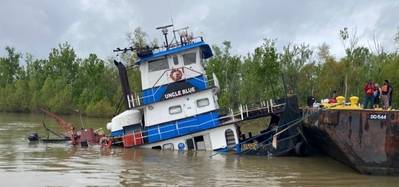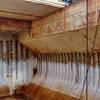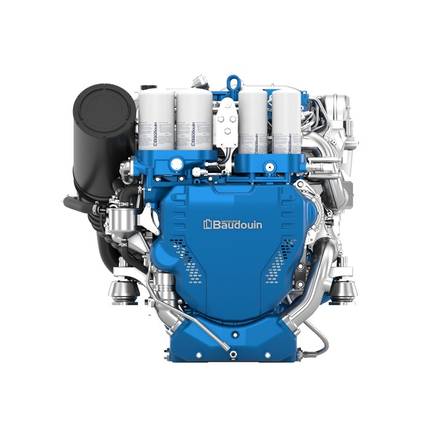Towboat Sank Due to Hull Deterioration -NTSB
A towing vessel that flooded and partially sank last year on the Lower Mississippi River near Ascension Paris, La. was found to have holes in its hull, the National Transportation Safety Board (NTSB) said in a report this week.
The 1964-built towboat Uncle Blue, owned and operated by Alexis Marine, was towing one empty barge on March 26, 2023, when the vessel began flooding and partially sank. There were no injuries, and no pollution was reported.
Salvors worked for four days to remove 1,400 gallons of fuel from the vessel and refloat the towboat. When the vessel was lifted by crane, NTSB investigators noted water pouring from holes in the portside shell plating in its lazarette. Investigators discovered the nearly 60-year-old vessel had numerous wastage holes in the hull and doubler plates installed near the wastage holes. Given the vessel’s age, the holes found in the hull and the presence of the double plates, investigators determined the hull was not adequately maintained.
“Although doubler plating can be used as a temporary repair solution, it is not generally suitable as a permanent repair for a vessel’s hull,” investigators said. “Vessel owners should crop out wasted steel on the hull and replace it by inserting new plating instead of covering it up with doubler plating.”
Investigators also found pipe runs inside the hull, which had previously been used to allow rods to run the length of the hull, were open on both ends in addition to being either corroded or missing where they passed through the voids. The openings allowed for progressive flooding forward into the voids and engine room.
“Steel hulls are susceptible to corrosion, erosion, and damage over time,” investigators said. “To avoid flooding or weakening of the hull, it is good marine practice for owners to conduct regular oversight and maintenance of hulls, including between drydock periods. An effective maintenance and hull inspection program should proactively address potential steel wastage, identify hull and watertight integrity deficiencies, and ensure corrosion issues are repaired in a timely manner by permanent means.”
Investigators also determined the lack of a high-water bilge sensor in the lazarette further contributed to the sinking by preventing early detection of flooding into the space. The only sensor was in the forward end of the engine room.
Damage to the vessel was estimated at $500,000.












